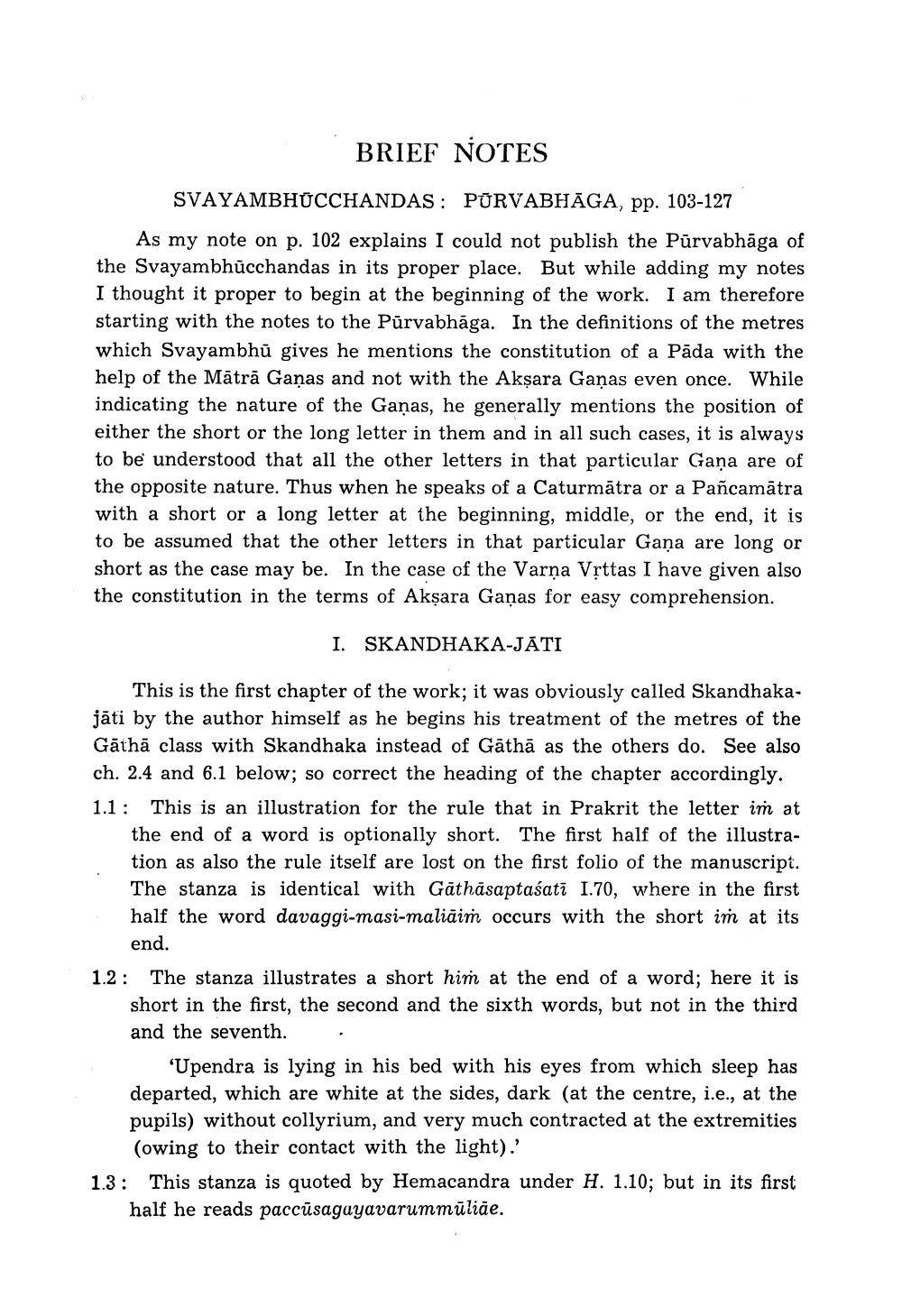________________
BRIEF NOTES
SVAYAMBHÜCCHANDAS: PURVABHĀGA, pp. 103-127
As my note on p. 102 explains I could not publish the Pūrvabhāga of the Svayambhücchandas in its proper place. But while adding my notes I thought it proper to begin at the beginning of the work. I am therefore starting with the notes to the Pūrvabhāga. In the definitions of the metres which Svayambhū gives he mentions the constitution of a Pāda with the help of the Mātrā Ganas and not with the Aksara Ganas even once. While indicating the nature of the Ganas, he generally mentions the position of either the short or the long letter in them and in all such cases, it is always to be understood that all the other letters in that particular Gaņa are of the opposite nature. Thus when he speaks of a Caturmātra or a Pañcamātra with a short or a long letter at the beginning, middle, or the end, it is to be assumed that the other letters in that particular Gaņa are long or short as the case may be. In the case of the Varna Vrttas I have given also the constitution in the terms of Akşara Gaņas for easy comprehension.
I. SKANDHAKA-JATI
This is the first chapter of the work; it was obviously called Skandhakajāti by the author himself as he begins his treatment of the metres of the Gāthā class with Skandhaka instead of Gāthā as the others do. See also ch. 2.4 and 6.1 below; so correct the heading of the chapter accordingly. 1.1: This is an illustration for the rule that in Prakrit the letter im at
the end of a word is optionally short. The first half of the illustration as also the rule itself are lost on the first folio of the manuscript. The stanza is identical with Gathāsaptaśati 1.70, where in the first half the word davaggi-masi-maliaim occurs with the short im at its
end. 1.2: The stanza illustrates a short him at the end of a word; here it is
short in the first, the second and the sixth words, but not in the third and the seventh.
"Upendra is lying in his bed with his eyes from which sleep has departed, which are white at the sides, dark (at the centre, i.e., at the pupils) without collyrium, and very much contracted at the extremities
(owing to their contact with the light). 1.3: This stanza is quoted by Hemacandra under H. 1.10; but in its first
half he reads paccūsagayavarum mūliāe.




